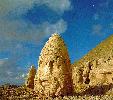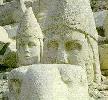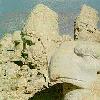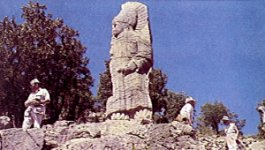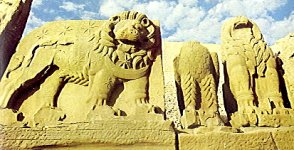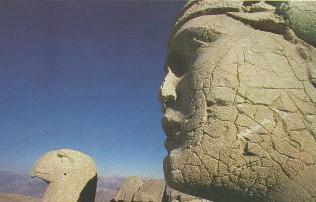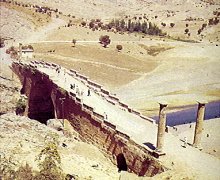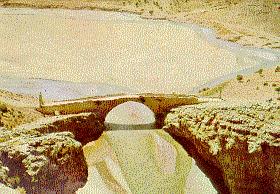| Mount Nemrut... |
|
Mount Nemrut is at an altitude of 2,150 m (7,053 ft) from the sea level, and the tumulus which includes the tomb of the
King of Commagene, Antiochos Epiphanes the I. is there. Mithradates the I., father of Antiochos to whom the tumulus belongs,
took advantage of defenselessness of the Seleukos who ruled in Syria after Alexander's death, and founded the independent
kingdom of Commagene in the year 80 BC. Mithradates the I. was succeeded by his son Antiochos the I. (62 - 32 BC) who
brought great fame to his country. The King who pointed out in his inscriptions that his maternal lineage had been traced
back to Alexander the Great, and his paternal lineage to the Persians, joined the two cultures for this reason. Mithradates
the II. was enthroned after him, and he was succeeded by Antiochos the III, during whose reign the country became powerful.
After his death, Vespasianus united Commagene to the province of Syria (72 AD). The tumulus is at a distance of 65 km
(40 miles) to the township of Kahta in Adiyaman; the tomb is placed in the middle of the tumulus and is covered by a small
hill which has a height and diameter of 50 m (164 ft) and 150 m (492 ft) respectively and made of small pieces of stones.
Terraces are built on the four sides of the tumulus. There is an altar in the eastern terrace and there are also statues
arranged in a line, with their backs turned to the tumulus. The heads of the statues have rolled down to the terrace in
front, but the bodies still stand erect. These gigantic statues with dimensions of 10 m (32 ft), are the statues of
Apollon, Tyche, Zeus, of Antiochos himself and of Heracles. Statues of eagles and lions are placed on the two sides of
these and, on the low walls adjacent to the two sides of the terrace, there are inscriptions which explain how the
ceremonies were performed. The statues on the western terrace are arranged in the same sequence. On the side of this
terrace, there are many relieves. The relief discovered in Arsameia, capital of Commagene and located in the village of
Kocahisar near the Stream of Kahta describes Mithradates and Heracles shaking hands and is a very interesting piece. The
epitaph in the grave chamber of Mithradates the I. which contains an inscription of 256 lines, is also interesting. The
Bridge of Cendere over the Stream of Kahta was built during the Roman Period.
|
|
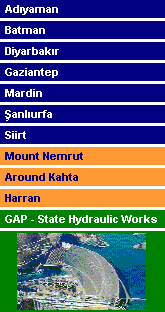
|


